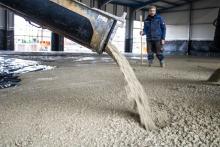
Cement and concrete are vital to the built environment, used for homes, infrastructure, and to provide things like clean running water. But the sector also accounts for 7% of global CO2 emissions. With the launch of the GCCA’s Concrete Future 2050 Net Zero Roadmap, it became the first heavy industry to set a clear plan for decarbonising.
Launching the Green Cement Technology Tracker is the next step along the industry’s roadmap.
Per Andersson, Head of the Secretariat – LeadIT, said: “In order to empower the industry and policymakers committed to emission reductions, our goal is to provide comprehensive tracking of public announcements of investments in low-carbon cement technologies.”
The Green Cement Technology Tracker currently includes Carbon Capture and Storage (CCS) and Carbon Capture Utilisation and Storage (CCUS), accounting for 36% of planned reduction levers in the GCCA 2050 Roadmap for Net Zero Carbon Concrete that leading manufacturers have committed to. Future steps to enhance the tracker include expanding its scope to cover more technologies that reduce emissions from cement manufacturing.
Thomas Guillot, chief executive of the GCCA, said: “Unleashing technology such as CCUS is key to achieving our net zero mission in our sector. Carbon capture pilots, projects and announcements are picking up pace across the world. This technology works, and our next goal is to scale up, working with stakeholders such as governments and the investment community to help transform the industry worldwide.”
The Tracker will be instrumental in assessing progress and ensuring transparency of low-carbon cement technologies, initially carbon capture and, in the future, complementary efforts to reduce emissions from cement manufacturing.

Preliminary data from the Green Cement Technology Tracker reveals that initiatives for carbon capture technologies are underway worldwide, predominantly in Europe, followed by Asia, North and South America, and Australia. Full-scale operational carbon capture plants are expected to come onstream in the coming years. Approximately half of the announced CCS and CCUS projects disclose their expected capture volumes. Post-combustion capture technology is currently the most common investment.










